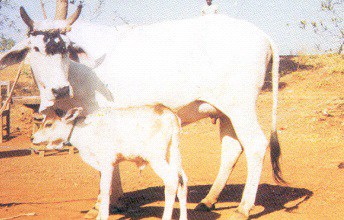Type the name of the breed you're looking for below
[wpdreams_ajaxsearchlite] Don't see the breed your're looking for? Click here and let us know!
Malvi cattle
| Place of Origin | India |
| Origin | The Malvi is primarily a draft breed which has developed in to different strains which are heavy, light or medium in size, depending on soil conditions. These cattle are mainly bred in the Malwa tract of Madhyabharat State of India. In the western parts adjoining Rajputana the type bred is larger in size. In parts of Madhya Pradesh where Malvis are bred, it is smaller in size. It is also bred in the northeastern section of Hyderabad state, where it is a popular breed for medium and light draft on the roads and for cultivation. It has been said that the Malvis resembles the Kankrej in many ways. |
| Purpose | Draught (work) |
| Appearance | Malvi cattle have short, deep and compact bodies. The back is straight but the hindquarters are drooping. The legs are powerful but short and the hooves are strong and black in colour. The dewlap is well-developed and the sheath is moderately pendulous. The head is short and broad with dished forehead. The hair around the eye sockets and the eye membranes are black in colour. The muzzle is broad, dark coloured and slightly upturned. The ears are short and pointed and not drooping. The tail is of moderate length with black switch reaching to about the fetlock. The colour is gray almost black on the neck, shoulders, hump and quarters. The cows and bullocks eventually become nearly pure white with age. |
| Horns | The horns, which emerge from the outer angles of the poll in an outward and upward direction, are strong, lyre-shaped and pointed. |
| Cows Average Weight | 340 kg (750 lbs.) |
| Bulls Average Weight | 500 kg (1102 lbs.) |
| Other Considerations | The breed is well-known for draft qualities. It is observed to be good on the road for quick transportation. Also the bullocks work well in the black cotton soil. They show great endurance and ability to carry heavy loads on rough roads. The cows observed in the village areas are observed to be poor milkers but selected cows on the farm show that they can produce 2.000 to 2,700 pounds of milk per lactation. |



